Mitchell Robinson just blocked this email
How a second round pick turned into a franchise building block in one season
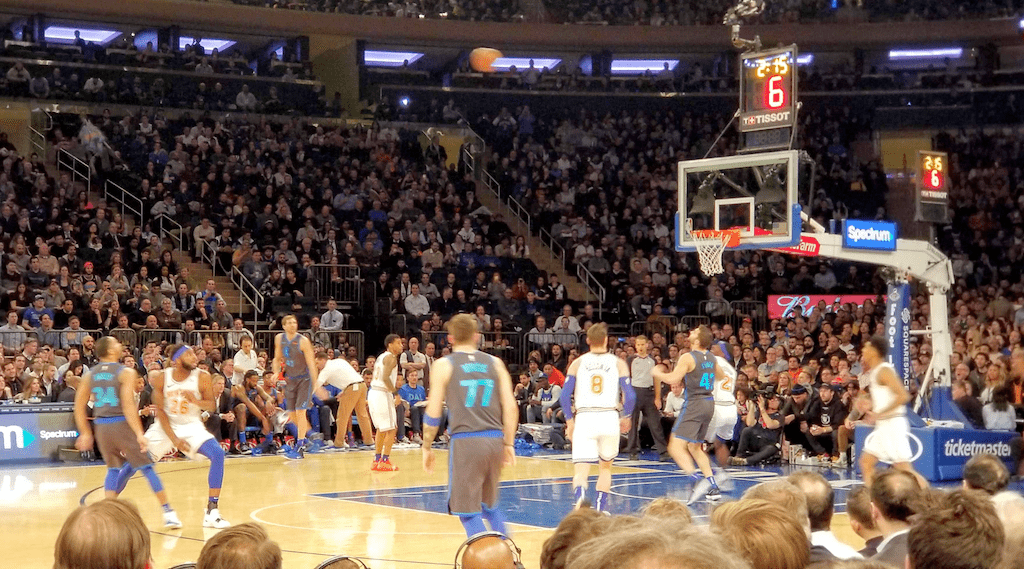
In a season full of ridiculous drama and brilliant performances, perhaps nothing shocked the world more than Mitchell Robinson inspiring actual hope in a legion of disgruntled and long-suffering Knicks fans. A long-limbed, kinetic dervish, Robinson spent the year protecting his basket and doing his very best to break the opponents.
The Knicks drafted Robinson in the mid-second round, and he’s already more than proven the worth of their investment. In fact, FiveThirtyEight’s helpful player projection tool, aptly named CARMELO, projects Robinson’s total value to net out around an all-star level (albeit with high variance in their confidence intervals).
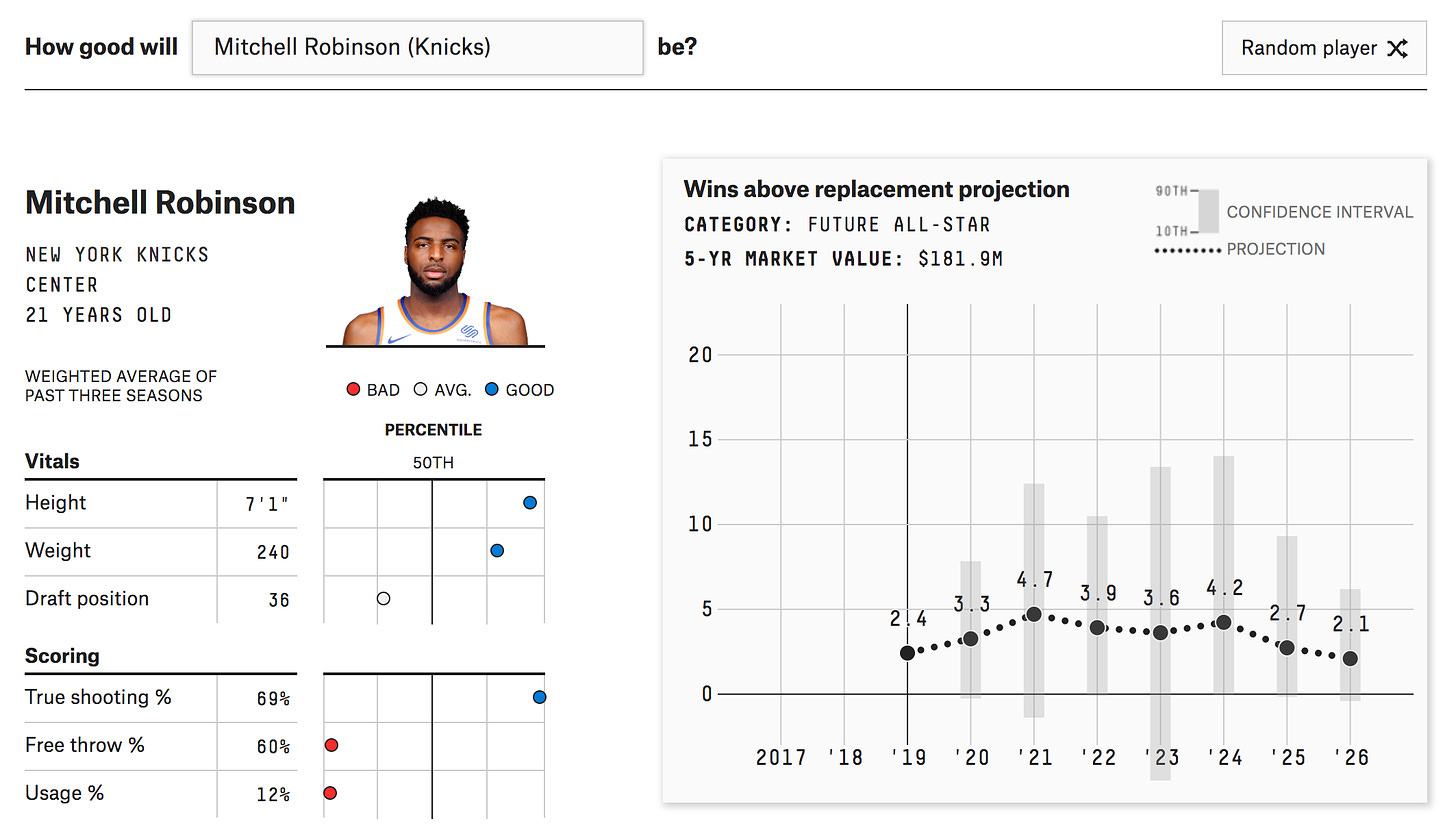
They even go so far as to rank Mitch a bit higher than the former beloved Knicks son, now lost forever to Dallas.
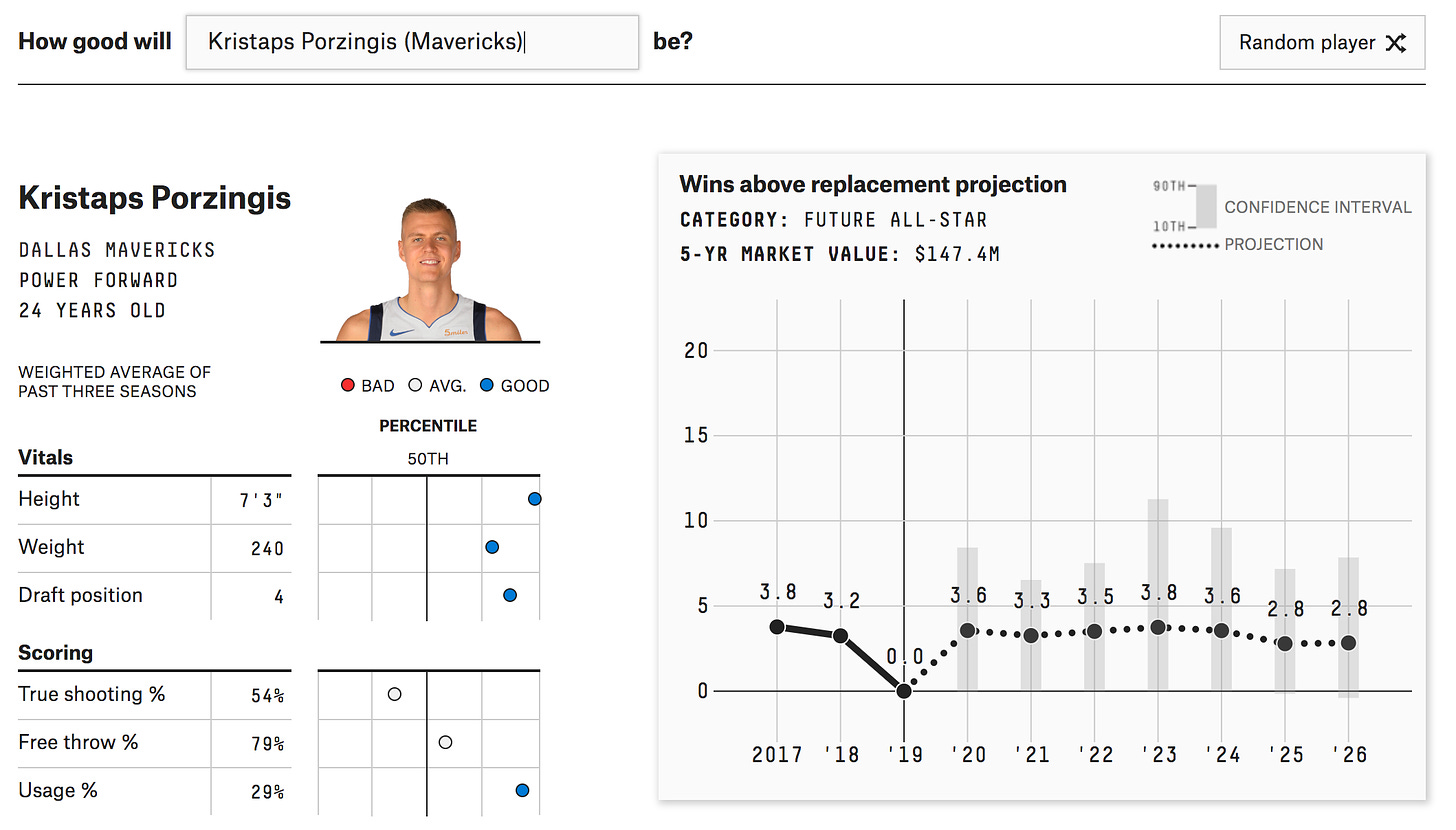
How exactly did Robinson evolve from second-round flier to potential franchise cornerstone?
He’s beloved by advanced metrics
My z-scoring model for rookies, which tracks standard deviations above a rookie average for several stats, had Robinson winning Rookie of the Year. His hugely impressive advanced stats powered the majority of his total score; this graph shows the number of deviations above the mean Robinson had for each key stat.

Per Basketball Reference, only three rookies posted a better defensive plus/minus (an imperfect but useful measure of a players’ impact on the court) than Robinson in NBA history: shot-blocking savants like Manute Bol and Mark Eaton and, funnily enough, the mostly backup big Greg Stiemsma.
Box score plus/minus helps quantify impact, but it does pose difficulties. For teams like the Knicks, whose ended the year as the worst team in the league, an improvement in the numbers only means an change from worst to just bad. In on-off metrics, Robinson finished in the 87th percentile for improving his team’s effective field goal rate and 91st in reducing his opponents’ efficiency, per Cleaning the Glass. This obscures the actual results a bit, as the Knicks had a 22nd percentile offensive field goal rate with Robinson on the court, while allowing a bottom-third points per 100 possessions.
Robinson surely increased his team’s production, but this improvement act like reductions to the New York subway issues; sure, the delays get smaller, but the system as a whole never becomes competent. We can still celebrate that growth, though!
Even with that caveat, one advanced stat that no one can take away is win shares per 48 minutes. Among rookies with at least 300 minutes, Robinson posted the tenth best WS/48 of all time, narrowly edging out a complete bust named Michael Jordan. Neither could top the actual leader in rookie WS/48 however.
A six month subscription to the first person to guess that player correctly (email me at mike@warmthebench).
He blocked everything in sight
Anyone blessed with a decent vertical or a shorter little sibling knows the abject joy of swatting a shot out of the sky, the tingling sting on your palm as the ball ricochets back at your poor victim. Mitchell Robinson is the physical embodiment of that feeling.
Robinson made blocks into an art form in his rookie year, leading the entire league in block rate per Basketball Reference at 10%. Block rate measures the percentage of opponents’ two point field goals blocked by the player, meaning that while Robinson was on the floor, Basketball Reference estimated that he blocked ten percent of his opponents’ non-three pointers.
Cleaning the Glass adjusts their stats to avoid garbage time (meaning a sadly large chunk of the Knicks season might be ineligible), and per their calculations Robinson finished second overall and first among players with at least 300 minutes played; shout out to Celtics rookie Robert Williams, a sort of strange analog to Mitch, for coming in first.
With that minute filter, here’s the entire list of any NBA rookie, ever, who posted a block rate of 10% or above:
Manute Bol
That’s the entire list. Bol barely eked out Robinson his rookie year with a block rate of 10.6%, but to his credit, also maintained that efficiency in nearly twice as many minutes. Bol averaged five blocks per game his rookie year, second all-time for any NBA player after Mark Eaton’s 5.6 in 1985 (caveat being that the NBA did not always track blocks, so legends like Bill Russell or Wilt Chamberlain will be missing from these record books).
Giri Nathan at Deadspin highlighted some of Robinson’s most iconic blocks, but I’ll always remember his early performance against the Orlando Magic as the first sign of excellence. Like sixty-four other games, the Knicks lost, but in that blowout Robinson hinted at a game-breaking potential that seemed pulled straight from NBA Jam.
He put up nine blocks in slightly over twenty-two minutes played. Adjusting for garbage time, Robinson produced a 18.8% block rate in fourteen minutes, per Cleaning the Glass. This means that nearly one out of every five shots taken by the Magic got sent back by Mitch.
In that game, Robinson ended up blocking shots as efficiently as Kevin Knox did making them, as the rookie wing struggled through a three for sixteen shooting night. Knox had the same chance of hitting his shot as Robinson did blocking his opponent.
His impact extended beyond just blocks, however. Opponents shot 60.3% at the rim with Mitch on the court, good for 78th percentile per CLG, representing a -3.6% drop when he was on court compared to while he sat on the bench. He also dropped three point accuracy by 3.1%, which might sound like odd noise in the data until you see Mitch fly across the damn court to swat a three into the fourth row.
He’s a rarely used, hyper-efficient offensive threat
While terrorizing opponents on the defensive end, Robinson spent the majority of his rookie year deferring on offense, posting a bottom-four percentile for usage rate per CLG. He did post a hyper-efficient true shooting rate at 69.2%, good for third best of any rookie, ever, but had little diversity in shot selection.
According to Cleaning the Glass, Robinson took 97% of his shots at the rim, which CLG helpfully visualizes with this amazing shot chart.
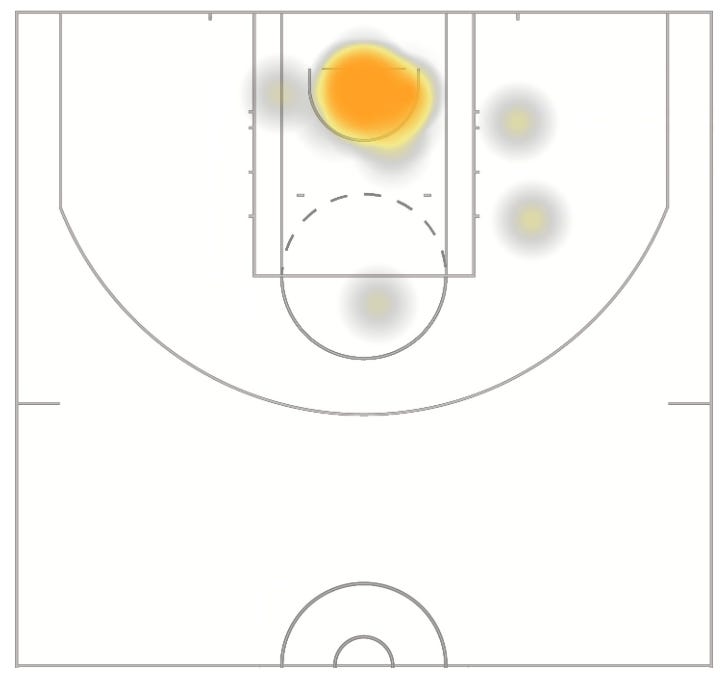
Is that a shot chart, or a kid’s drawing of the sun?
Robinson converts alley-oops from any conceivable angle, combining elevation with flexibility to dunk across many different heads. His scoring proved a bit dependent on others playmaking for him, with 63% of his made baskets come off assists from teammates per CLG. I’m unconvinced this poses an issue, though, as I seriously doubt the Knicks brass ask their young big to channel Kevin McHale in the post and alter his efficient rim-runner game.
What can he focus on for year two?
Much like the path forward for Kevin Knox, Mitch could benefit immensely from improvement from the lead playmakers. If Dennis Smith, Jr. can take a leap forward, or if Elfrid Payton ends up owning more of the workload and keeps his career assist rates in tact, Robinson will enjoy improved looks at the rim. Here’s how Payton produced as a playmaker per Cleaning the Glass’s assist to usage ratio: anything in orange represents improvement over the average player.

Payton’s emphasis on empowering his bigs could reap dividends for Robinson. Per NBA.com’s tracking stats, Robinson produced below-average field goal rates (for his lofty benchmark) when getting a pass from Emmanuel Mudiay, and Mudiay posted an abysmal 0.90% assist to usage rate, per Cleaning the Glass. For someone currently dependent on his guards to produce offensively, Robinson needs sustained growth from the Knicks’ lead guards to take the next step.
Beyond improvements at point, Robinson may benefit from an entirely new cast of frontcourt mates. The Knicks signed a multitude of wings and bigs, adding Taj Gibson, Bobby Portis, Marcus Morris, and most notably Julius Randle to the mix. Randle figures to pair most frequently with Robinson, as both represent foundational young prospects for the rebuilding squad.
The Athletic’s Mike Vorkunov wrote a brilliant analysis of exactly what to expect from Randle next season, and the growth and chemistry that Randle and Robinson develop will be key to each players’ improvement on both ends of the court. He explained:
Robinson is only an offensive threat around the rim at this point. Although Robinson could probably play alongside Randle defensively, guarding the rim and making up for mistakes there, moving him further out could make for an awkward fit on offense. Randle was able to play off Davis in the post last year, cutting off-ball and using the space and attention focused on Davis created for him. He wouldn’t have that playing alongside Robinson, who is dependent on others to create for him at this point. Even if Randle’s perimeter shot is improving, he’s still not a large enough threat to make it easier on Robinson. Teams were willing to lay off him beyond the 3-point line, which would only muddy things for Robinson.
The Knicks hope that Randle opens up more of the court for Mitch with his diverse offensive output and improving midrange game, but as you can see in Cleaning the Glass’s shot chart for him, there’s still a large, firey orange surrounding the paint.
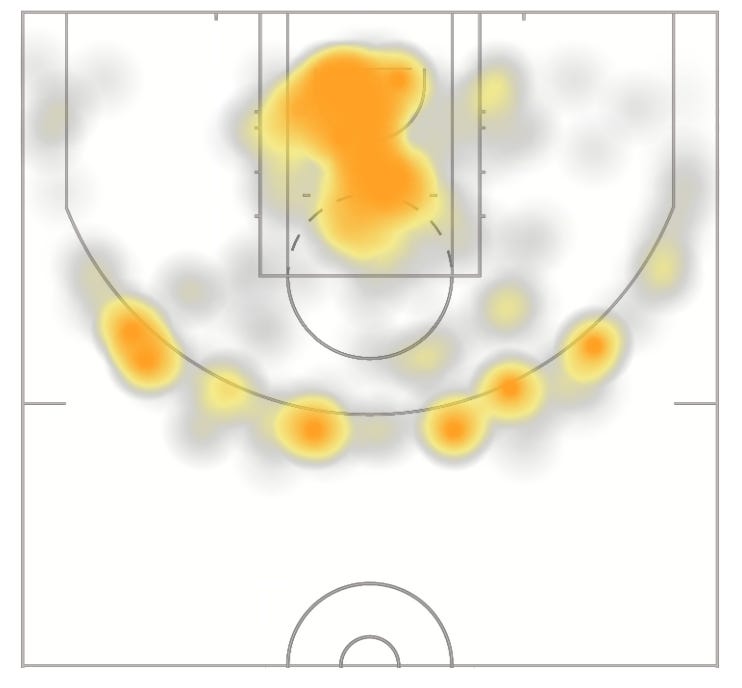
Navigating that crowded area on offense will be key for Robinson’s continued offensive development. He may even be experimenting with some longer jumpers, as broken out in this great Knicks Wall piece, but I’m skeptical we’ll see Mitch expand to three point range next year.
Beyond his integration with new teammates, Robinson also needs to focus on reducing his fouls. He averaged 5.7 fouls per 36 minutes according to Basketball Reference, often letting his pursuit of a block place him in foul trouble. Minimizing his fouls while maintaining his aggression in blocking shots will be a tightrope for the young big to navigate, but that growth is vital if he wants to take the next step.
And, if he does take that leap, the Knicks have a foundational piece, who elicits more “get that shit out” yells from Knicks fans that any player in recent memory.


